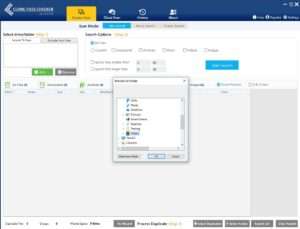You’ve bought a cloud backup plan or using a free-one and running short of space? This happens when you have stored a lot of files online. You can avoid buying extra storage space by trimming the existing data. One simple way to do this is to clean online data through a duplicate file cleanup utility.
The process of organizing your files in the cloud is simple. All you need to do is to spare some time to download that data into a compressed format for faster import of files. After receiving files, you can clean the duplicate files. This will save you a lot of space and you will be in a better position to organize data the way you want.
Here are the steps to do this:
Log in to Cloud Online Backup Portal
Log in to your online backup service and, if storage space is scarce, download the data back into your computer if needed. Most online backup services allow you to sync your existing data right from your PC. You have to accurately figure out which folders are being backed up so that you can easily perform identical files cleanup.
Save Data into Hard Disk Drive
Save the compressed folder into a separate hard drive so that you can easily locate it. You would have to perform cleaning on this data, so it is better you do not mix it with the existing data. Making an easily identifiable folder would be helpful.
Download and Install Clone Files Checker (CFC)
Download and install Clone Files Checker. This handy program would clean duplicate files from your desired folders and hard disks.
Duplicate files can be created over time and can be in 10s of GBs. The duplicates not only cause clutter in our PC and Online Storage but also make it difficult for us to sort data. The duplicate cleaner, Clone Files Checker will delete the same copies of photos, videos, music files, documents and archives.
Run the Folder-Scan through CFC
It is very easy to use CFC in order to reclaim cloud storage space. You just need to right-click the folder that you downloaded from either Dropbox, Mozy, Carbonite, etc. The right-click option will present you an option to scan for duplicate files. Give it a go-ahead and you will see an automatic cleanup in minutes.

Quick-Fix or Review Duplicate Files
The Clone Files Checker allows you to quickly remove copied data. However, you can also choose to review the photos and other files before removal. The software will take backup of duplicate files before removal so that you can restore these files if needed.
There are three options to eradicate cloned files:
1. Permanently Delete
2. Move to Recycle Bin
3. Move to Another Folder
First option will wipe out unwanted files permanently. Remember, due to advancement in technology, you would still be allowed to recover this data. Good thing is that this backup will not eat much space inside your PC.
Second option send files to the Recycle Bin which can only be restored from there.
This option provides another smart way to further segment data and save it into a separate folder. You can also use this technique to find more duplicate data and delineate it from the original files. It can make data upload process faster and simple. Using this feature you can avoid uploading redundant files to the cloud.
Re-Upload or Sync to the Cloud
After duplicate cleanup, upload the data again to the cloud. You will be amazed to know that you can remove tons of duplicate files which are eating your cloud-backup space.
Warning: Undefined array key "author_box_bio_source" in /home1/clonefil/public_html/blog/wp-content/plugins/molongui-authorship/views/author-box/parts/html-bio.php on line 2
I am director and business manager at Sorcim Technologies. The product Clone Files Checker, this blog, and the content written for the blog are the properties of Sorcim. We are responsible for the content and we are always willing to answer your queries about our solutions. We encourage you to contact us should you have any questions!
We are into IT since 2004. We love to make software programs, web-services and mobile applications that solve various computing problems.

